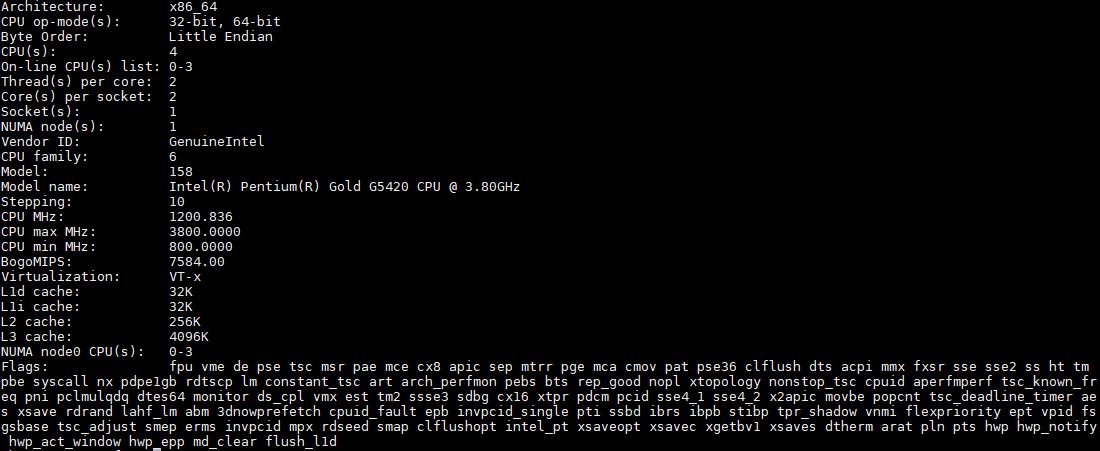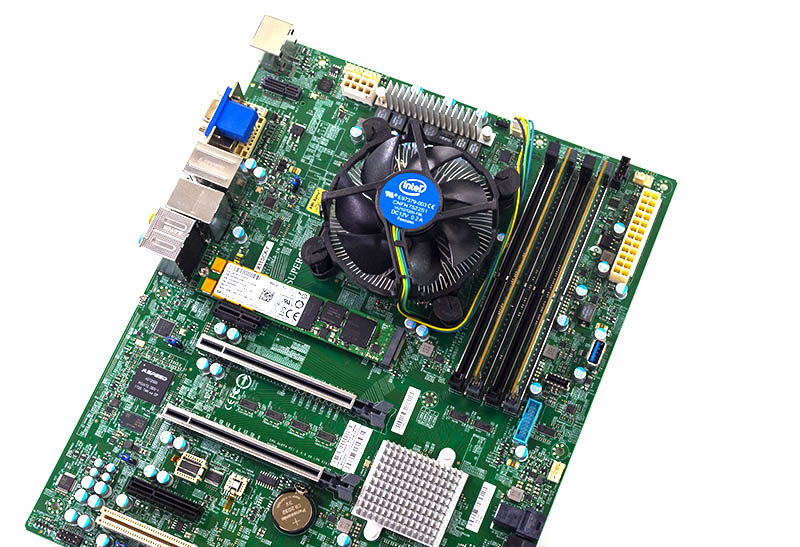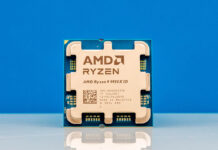The Intel Pentium Gold G5420 is a great CPU possibly from a bygone era. In 2020, it is still considered a modern CPU but with many features missing. While this is a “Coffee Lake” generation CPU, it is heavily de-featured. In our review, we are going to discuss the trade-offs made for this sub $65 part. While many will review this chip as a potential desktop part, we are going to take a look at it in the context of a server chip.
Key stats for the Intel Pentium Gold G5420: 2 cores / 4 threads with a 3.8GHz base clock and no turbo boost. There is 4MB of onboard cache. The CPU features a 54W TDP. These are $64 list price parts. Here is the Intel Ark page for your reference.
Here is the lscpu output for the Pentium Gold G5420:

While the “Pentium” brand was a premium line two decades ago, it now covers a fairly wide range of processors. We do not often call a CPU “cheap” but in this case, that is what we have. There are only 20 other articles on STH where “cheap” is even used as of this writing. For servers, the CPU has an integrated GPU, but unlike the workstation side, system vendors must explicitly do extra work to enable it in server platforms. We find this CPU in some extremely low-end servers because it is low cost, low power (54W TDP), and has a feature many consumer CPUs lack: ECC memory support.
In terms of memory support, unlike many of its contemporaries that support DDR4-2666, the G5420 supports only up to 64GB using ECC UDIMMs at DDR4-2400 speeds. It still has two memory channels which help bandwidth on this two core/ four-thread processor. Then again, with only two cores using 16GB x 4 DIMMs for 64GB yields 32GB per core or more than cloud service providers provision.
De-featuring goes beyond just memory speed and capacity. These chips use a reduced instruction set. While Intel has rolled out AVX, AVX2, AVX-512, and now DL Boost for AI inferencing, the G5420 supports none of these. It is a SSE4.2 chip which was first implemented on Nahelem in 2008. Practically, this means instructions such as bmi2 that we use in our chess benchmark are not available so that test reverts to using popcnt instead.
While this is, perhaps, an ominous prelude to our benchmarks, there is another perspective and that is price. At under $65, this is a cheap product. We are all accustomed to lower quality and features for a lower price and that sums up the G5420. For many markets, two 3.8GHz cores with two threads each are perfectly sufficient. This is more compute power than most NAS units have by a significant margin. In our review, we are going to look at how it fares compared to something like the Intel Core i3-9100F to see if the extra $33 (~50%) or so is worth it.
Test Configuration
Here is our basic configuration for this class of CPU:
- Motherboard: Supemicro X11SCA-F
- CPU: Intel Pentium G5420
- RAM: 4x 8GB DDR4-2666 ECC UDIMMs (at DDR4-2400)
- SSD: Intel DC S3710 400GB
- SATADOM: Supermicro 32GB SATADOM
The CPU itself supports up to 64GB of RAM, in a 4x 16GB configuration. We see these platforms using 8-64GB or less given cost sensitivities.

There are going to be folks who want to point to AMD alternatives. As of this writing, there are really no alternatives in this space because while AMD may have competitive CPU parts, vendors have a vibrant Intel Xeon E-2100/ E-2200/ Core i3/ Pentium ecosystem. AMD needs to do some work here to catch up, but it is not a focus market for them. Single socket servers in this segment are a relatively low volume area.
Next, we are going to take a look at our Intel Pentium Gold G5420 benchmarks, we are then going to focus on power consumption then conclude with our final words on the processors.





Didn’t realize Intel had given these Pentiums AES acceleration finally. I might just use this CPU in my next PFSense box.
54w processor for small business or home small server?
That not very appealing
yawn, you two.
IMO, AMD just need to clone some Ryzen 3000s consumer CPUs and put some server features more appealing: ECC support, high DIMMs density, crypto accel. etc. I have no doubt these Pentium “Gold” will looks blant compared to Ryzen 3000s. While Rome is winning at the top end, this is the time they need to fill up the lower end market.
AMD already has the CPUs to compete against this, but there’s a lack of AM4 server boards.
Very likely Intel is aware of the danger ARM hardware poses to the company’s bottom line…
The last sentence in the second to last paragraph is so true. Not enough Epyc/Ryzen servers out there with the big brands. Looking for a 16C Epyc Rome tower and I’m gonna have to use a Supermicro builder or generic workstation builder instead.
Seriously guys…why do you continue to do reviews of intel CPUs which has so many critical security holes, that nobody in right mind would buy and put that in server? Personally(in home), I get rid of everything with intel procesor…from workstations to servers. Only PC with intel procesor left, is old Ivy Bridge Core i7-3700 which I use as gamebox with windows.
Anything can be a server if you define server appropriately.
I have a c50 netbook that functions as an SSH bastion ‘server’ on my home network. It isn’t good for much else.
would it have made sense to compare against some Xeon D processors?
If your goal would be to make a cheap (nas)server or whatever with this cpu you might want to look at another mb since the Supermicro X11SCA- cost in excess of 300$ if you even can get it NEW nowdays, used hw is another matter ofc…
Great point. We are just using a common platform for this testing. The timing of this review was specifically because we had the MicroServer Gen10 Plus review coming a few days later which has a pre-configured model using the G5420.
Thanks for this very informative posting. I just bought a new desktop with then Pentium Gold as my Intel Celeron CPU N3350 1.1ghz laptop was not sufficiently strong for some analytics features. I was looking forward to unboxing my machine but now I kind of feel that I should have gone for a Xeon.